Questions to Ask Before Setting Up a Virtual Lab in College
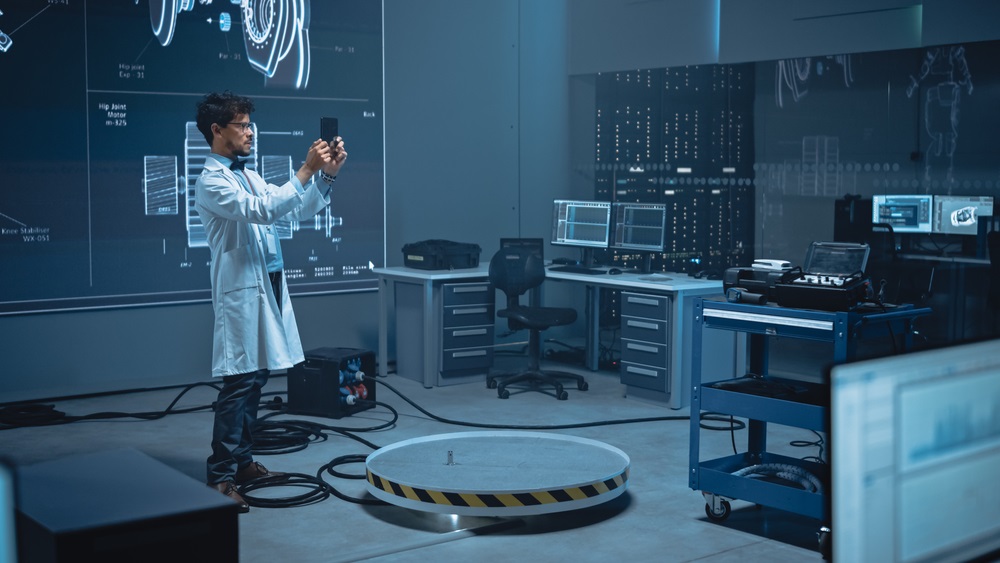
In today's technologically driven education system, virtual labs have emerged as a game-changer, bridging the gap between theory and practical application. But before plunging into this digital evolution, it's vital to address several pivotal questions.
Here's a comprehensive guide to help you make an informed decision when choosing the best virtual labs for your college.
What are the Educational Objectives we aim to achieve with the Virtual Lab?
Let’s start with the basic question, Why do colleges need VR education?
What are the educational objectives that you aim to achieve with the virtual lab?
The primary educational objectives for the virtual lab encompass experiential learning and skill development.
If you are planning for setting up a virtual reality lab, then it should aim to simplify complex theories, provide a risk-free platform for experimentation, and grant broader accessibility.
Additionally, it should also seek to offer learning flexibility, bridge theoretical and practical gaps, promote collaborative learning, and develop essential scientific skills.
Moreover, the virtual lab at your college must gear towards environmental sustainability by minimizing waste and providing an immediate feedback mechanism. Ultimately, the lab must serves as a preparatory platform for advanced studies and research.
1. Who makes the Virtual Labs? Is the company reliable?
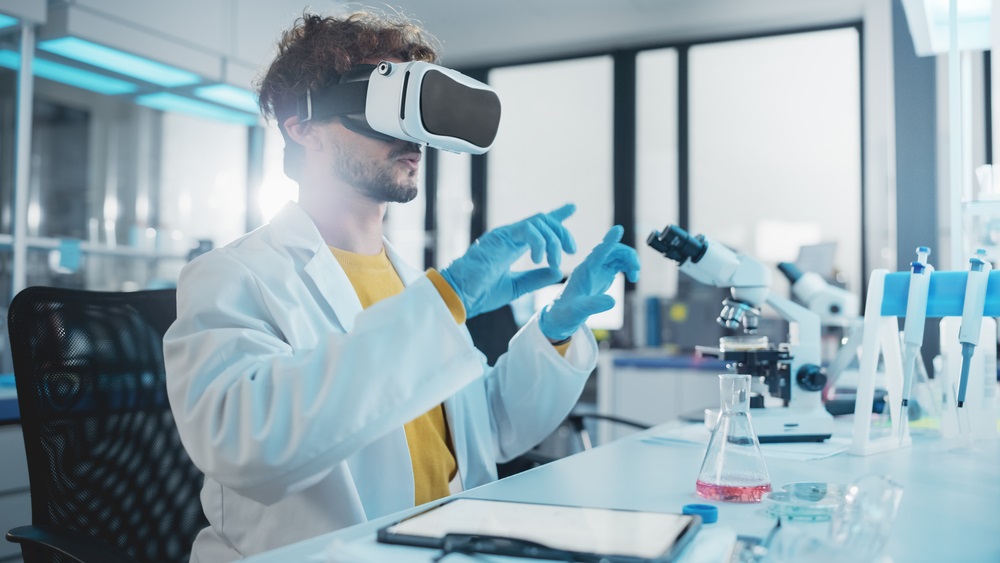 Before asking how to setup VR labs at your institution, you should ask which VR company should you choose.
Before asking how to setup VR labs at your institution, you should ask which VR company should you choose.
It is crucial to choose a virtual lab company that won’t let you down. iXR Labs’s virtual labs are renowned for crafting bespoke and cutting-edge VR content tailored specifically for Engineering, Medical, and Sciences students.
Our objective?
To transform traditional learning paradigms and redefine how students perceive and engage with reality.
● Engineering: iXR Labs beckons students into an expansive world of learning. This VR platform unveils intricate machinery, helping budding engineers grasp intricate experiments and equipping them for the challenges of the real world.
● Medical: The medical journey becomes incredibly immersive with iXR Labs. Our VR labs offer an interactive foray into human anatomy, ensuring students gain hands-on experience, crucial for mastering advanced medical techniques and procedures.
● Sciences: iXR Labs caters to the naturally inquisitive. Through interactive VR experiments, science students are provided a safe yet intriguing environment to hone vital skills and amplify their innate curiosity.
What bolsters the credibility of iXR Labs is our impressive library of over 100 VR modules, making us one of the global leaders in immersive educational content. From enriching industrial tours, showcasing groundbreaking machinery, and facilitating detailed experiments to diving deep into the intricacies of human anatomy, the offerings stand as a testament to our commitment to quality and innovation.
2. How will the Virtual Lab enhance students' learning experiences compared to Traditional Labs?
Virtual labs, particularly those pioneered by innovative platforms like iXR Labs, introduce a transformative shift in the academic landscape, offering enhancements over traditional labs in multiple facets with its virtual learning environment.
Interactivity and Immersion: Virtual labs transport students into a digitally crafted world where they can interact with complex systems, machinery, or anatomical structures up close. This immersive technology in college experience deepens understanding, retention, and engagement, making learning more intuitive and less reliant on imagination or abstract thinking.
Safety and Flexibility: While traditional labs often have inherent risks, especially when dealing with hazardous chemicals, delicate specimens, or complex machinery, virtual labs eliminate these risks entirely. Students can conduct experiments or operate machinery without physical consequences, allowing for trial and error without fear.
Unbounded Exploration: Unlike traditional labs constrained by physical space, equipment, or budget, virtual labs offer limitless possibilities. Whether it's exploring the human body at a cellular level, manipulating large-scale machinery, or recreating historic experiments, the digital realm is bound only by the scope of the software.
Personalized Learning: Virtual labs can adapt to individual student needs, offering customized scenarios, varying difficulty levels, or supplementary resources on-demand. This personal touch ensures that learners move at their own pace and depth, maximizing their potential.
Scalability and Accessibility: Traditional labs might be limited by equipment availability, making it challenging for large student batches or remote learners. Virtual labs can be accessed anywhere, anytime, ensuring all students have equal opportunities to engage, regardless of location or time zones.
Integration with Modern Pedagogy: The digital nature of virtual labs makes them ripe for integration with other learning technologies, such as Learning Management Systems, analytics tools, and collaborative platforms. This offers educators insights into student progress, areas of struggle, and potential areas for curriculum enhancement.
Environmental and Financial Efficiency: Virtual labs can recreate expensive, rare, or environmentally harmful experiments without actual resource consumption or waste production. This not only is eco-friendly but also cost-effective in the long run.
3. How will the Virtual Lab be integrated into the existing curriculum?
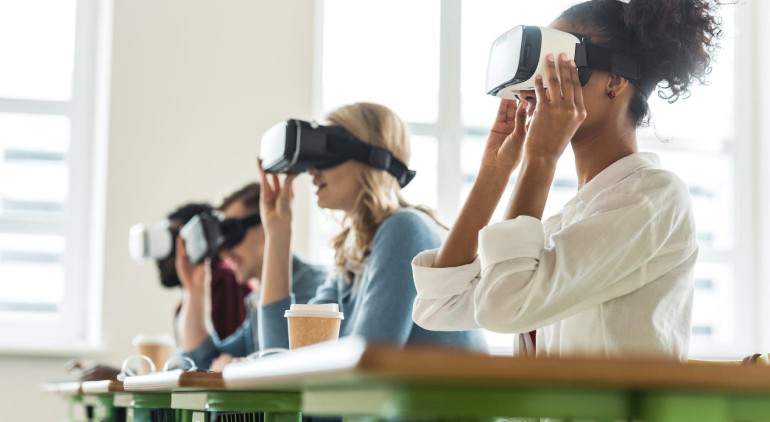 The virtual labs are designed for seamless integration.
The virtual labs are designed for seamless integration.
It complements the existing curriculum by aligning with course objectives and learning outcomes. Instructors can embed virtual experiments alongside theoretical lessons, ensuring practical applications are intertwined with classroom discussions.
Additionally, the lab's modularity allows customization to cater to specific course requirements.
4. Can Virtual Labs be used in-person?
Absolutely! Virtual labs aren't just designed for remote or individual use. They seamlessly integrate into in-person educational settings and offer a host of advantages.
Interactive Demonstrations: Instead of merely discussing a theory or process, instructors can project virtual lab simulations on large screens or interactive whiteboards during lectures. This visual representation can make abstract or complex concepts more tangible, ensuring that students grasp intricate details with clarity.
Hands-on Group Experiments: Virtual labs can foster group collaboration. Students can work in teams, tackling different aspects of an experiment or simulation. This collaborative approach can enhance peer learning, problem-solving skills, and teamwork.
Instant Feedback and Analysis: As students engage with the virtual lab in a classroom setting, instructors can provide real-time feedback, guiding them through challenging portions or highlighting critical learning points. This immediate feedback loop can significantly accelerate the learning process.
Reducing Resource Constraints: In instances where a physical lab might lack specific equipment or resources, the virtual lab can fill the gap. Students can experience the practical side of their studies without the institution incurring the high costs or logistical challenges of procuring and maintaining specialized equipment.
Enhanced Engagement: Incorporating technology into the classroom invariably boosts student engagement. The novelty of interacting with a virtual environment can rekindle curiosity, especially among students who might find traditional teaching methods less stimulating.
Facilitating Difficult or Dangerous Experiments: Some experiments might be too hazardous, ethically questionable, or logistically challenging to conduct in a physical lab. Virtual labs can simulate these scenarios, ensuring students gain the requisite knowledge without the associated risks.
Tailored Learning Paths: Even in an in-person setting, students have varied learning needs. Virtual labs can offer differentiated paths, allowing students to delve deeper into areas of interest or spend more time on challenging topics.
5. What are the Hardware and Software requirements for the Virtual Lab?
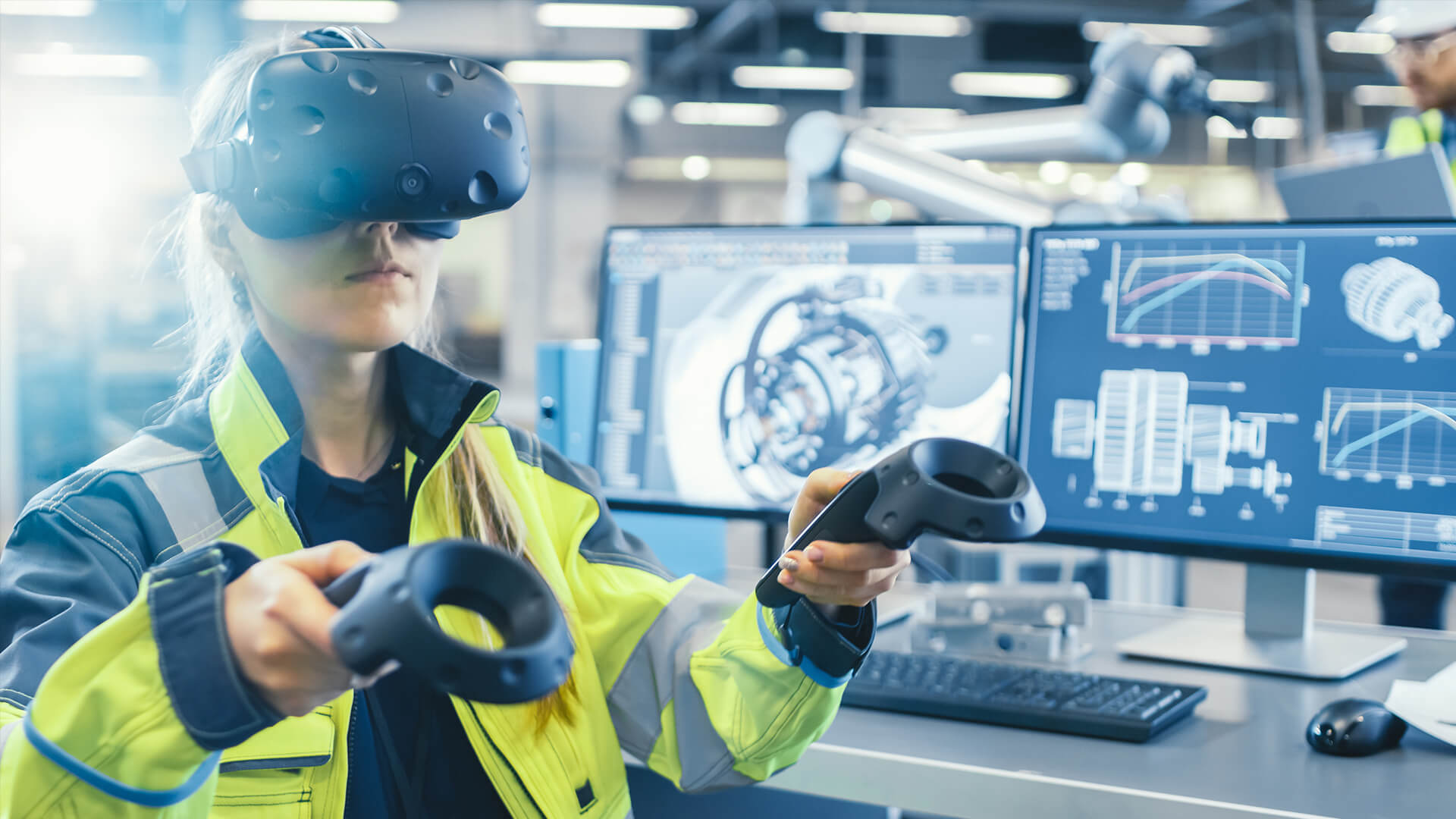 The virtual lab is optimized for diverse platforms. While specific requirements might vary, a standard computer with [specified RAM, CPU, etc.], and a stable internet connection suffices.
The virtual lab is optimized for diverse platforms. While specific requirements might vary, a standard computer with [specified RAM, CPU, etc.], and a stable internet connection suffices.
The lab runs on web browsers, eliminating the need for extensive software installations. Mobile compatibility ensures students can access the lab on tablets and smartphones as well.
6. What is the estimated cost of setting up and maintaining the Virtual Lab?
A number of universities are adopting AV/VR actively, but for many educators, the initial consideration when looking into virtual labs is the associated cost. As not every institution can afford high cost.
iXR Labs' cutting-edge virtual platforms do more than just mimic a traditional lab setup. They immerse students in rich, interactive environments that bolster analytical thinking, problem-solving, and synthesis, all without the hazards and limitations of a physical laboratory.
7. When weighing the costs, the long-term value becomes evident.
Studies have showcased that students, when complemented with iXR Labs' virtual experiences alongside traditional teaching, demonstrate a significant improvement in learning outcomes.
The financial outlay for iXR Labs is not only competitive but also frequently proves to be more economical than procuring individual lab kits or maintaining physical lab spaces. The investment in iXR Labs is an investment in progressive education.
"Ready to set the stage for virtual excellence? Ask the right questions and craft your college's ultimate virtual lab experience now!"
8. What training will Faculty and Students need to effectively use the Virtual Lab?
One thing an educator can ask for while setting up a virtual lab is the training. Ensuring that both faculty and students are proficient with the new platform is paramount to its successful implementation.
For faculty members, we will offer in-depth training sessions that dive into how to integrate the virtual lab with their existing curriculum, familiarize them with the lab's various features, and empower them with troubleshooting techniques. These sessions aim to equip educators with the confidence and skills to effectively utilize the virtual environment to its fullest potential.
For students, their journey with the virtual lab will begin with orientation sessions. These sessions are designed to acquaint them with the platform, showcasing its robust capabilities and the innovative ways they can engage with the material. This ensures that from the outset, students feel comfortable navigating the virtual lab and extracting the most value from their experiences.
Additionally, to support ongoing learning and address any challenges that might arise, both faculty and students will be granted access to an online resource portal. This portal will host a range of resources, from step-by-step tutorials and video guides to FAQs and detailed user manuals. This ensures a smooth transition and sustained efficacy in the virtual lab's utilization.
9. How will technical support be provided for users experiencing issues?
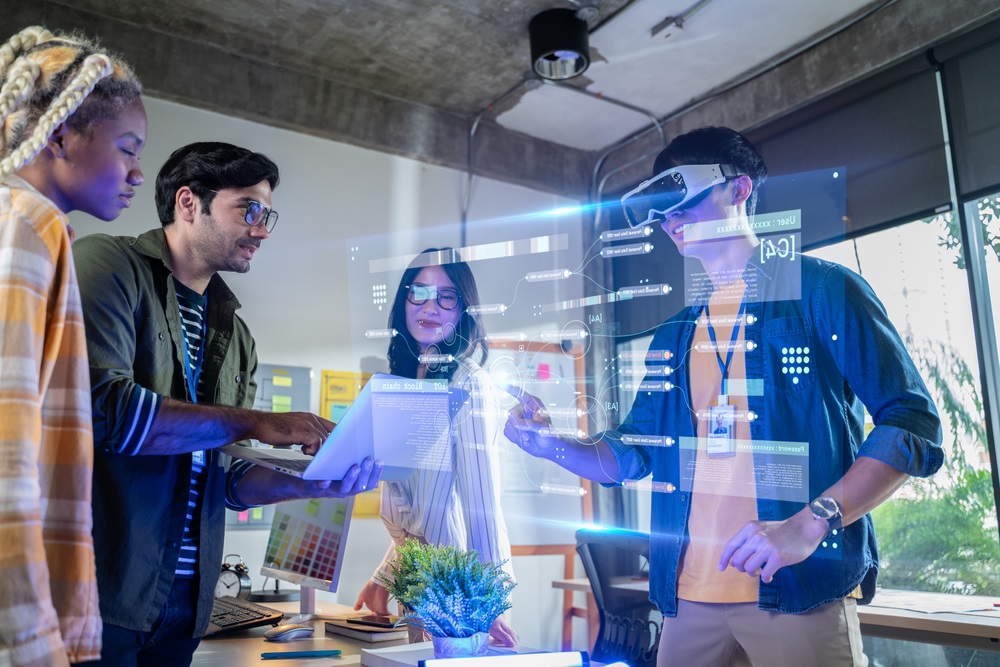 Technical support is a cornerstone of a successful virtual lab experience. Recognizing the potential challenges users may face, we have established a robust and responsive technical support system to ensure uninterrupted learning and exploration in the virtual environment.
Technical support is a cornerstone of a successful virtual lab experience. Recognizing the potential challenges users may face, we have established a robust and responsive technical support system to ensure uninterrupted learning and exploration in the virtual environment.
Dedicated Support Team: A team of skilled technicians and support specialists will be available to address any technical issues or concerns. They will be accessible through multiple channels such as phone, email, and live chat, ensuring users can reach out in the manner most convenient for them.
24/7 Helpline: Understanding the diverse schedules of educators and students, we offer a round-the-clock helpline. This ensures that users across different time zones or those working late into the night can get immediate assistance.
Ticketing System: For non-urgent queries or issues, users can raise a ticket through our online portal. Each ticket will be addressed based on its urgency and complexity, with regular updates provided to the user until resolution.
Knowledge Base & FAQs: To empower users with self-help tools, we've curated a comprehensive knowledge base. This digital resource contains articles, video tutorials, and troubleshooting guides, allowing users to find quick solutions to common challenges.
Remote Assistance: For more complex issues, our support team has the capability to offer remote assistance. With the user's consent, they can access the virtual lab interface remotely to diagnose and resolve problems in real time.
Regular Updates & Patches: Proactively, our team will continually monitor and optimize the virtual lab platform. Regular updates and patches will be rolled out to ensure compatibility, enhance performance, and fix any known bugs.
Our commitment is to ensure that every user, whether a faculty member or student, has a smooth and enriching experience in the virtual lab, with immediate assistance available at their fingertips should they need it.
 Get the App from Meta Store: Download Now
Get the App from Meta Store: Download Now
10. How scalable is the Virtual Lab solution in case we need to accommodate more students in the future?
One of the major advantages of adopting a digital solution like a virtual lab is its inherent scalability, which becomes vital in dynamic academic environments where student populations can fluctuate.
Cloud-First Approach: Our virtual lab leverages the power of cloud computing, ensuring we can accommodate an increase in user traffic with minimal friction. This means that as your institution grows and more students need access to the lab, there's no need to invest heavily in new infrastructure or equipment. The cloud system effortlessly scales up to meet demand.
Adaptive Load Balancing: To ensure seamless performance, our virtual lab utilizes adaptive load balancing. This means that as more students access the platform, it intelligently distributes the user load across servers, ensuring consistent, fast performance regardless of user volume.
Modular Design: The structure of the virtual lab is modular, allowing for the easy integration of new experiments, simulations, or tools as required. This ensures that as the educational needs of your institution evolve, the lab can evolve with them.
Effortless User Management: Adding new users, whether students or faculty, is a straightforward process. Our intuitive user management system is designed to make onboarding large groups of students quick and hassle-free.
Cost-Effective Expansion: Traditional labs often come with significant costs when expanding – from procuring new equipment to accommodating additional space. With a virtual lab, expanding to cater to more students is not only faster but also more cost-effective.
Are there plans to add more experiments, simulations, or tools in the future?
Absolutely! One of our core commitments at iXR Labs is the continuous enhancement and expansion of our offerings to meet the dynamic needs of the modern educational landscape.
Dynamic Development Cycle: At iXR Labs, we operate on a dynamic development cycle. This means we're constantly in the process of research and development, ensuring we're on the cutting edge of educational simulations and tools.
Feedback-Driven Improvements: We value feedback from our partner institutions and users. It's not just about adding more experiments and simulations; it's about ensuring they are relevant, impactful, and aligned with the evolving curriculum requirements. By maintaining an open channel of communication with educators and students, we ensure that our new additions are in line with what the educational community truly needs.
Collaborations with Experts: Our team collaborates with educators, researchers, and experts in various scientific fields to design new experiments and simulations. This ensures that our modules are not only educationally sound but also rooted in real-world applicability.
Upcoming Modules: While we cannot divulge specifics due to proprietary reasons, we can assure you that our roadmap for the coming years is packed with exciting new modules. These will span across different disciplines, ensuring a wide variety of academic fields benefit from our virtual lab experiences.
Regular Updates: Subscribers to our platform can expect regular updates. Not only will this introduce new experiments and tools, but also improvements in graphics, user experience, and interface based on the latest technological advancements.
11. How will the virtual lab integrate with other systems in use
iXR Labs prioritizes a holistic digital educational experience, ensuring that our virtual lab functions as an integral part of the academic system rather than a standalone tool. Our focus on seamless integration ensures educators and students can harness the full potential of combined systems, creating a synergistic learning environment.
Seamless Integration with LMS and SIS: At iXR Labs, understanding the broader digital ecosystem in educational institutions is crucial. That's why our virtual lab is designed with integration at its core. Through robust API (Application Programming Interface) integrations, our virtual lab seamlessly connects with widely used Learning Management Systems (LMS) and Student Information Systems (SIS).
Data Synchronization: As educators and administrators, real-time data flow and access are paramount. Our integration ensures that student progress, grades, and usage data from the virtual lab can be effortlessly synchronized with the LMS or SIS. This automatic flow of data eliminates manual entry, reducing errors and saving valuable administrative time.
Single Sign-On (SSO) Capabilities: For ease of access and enhanced security, the virtual lab supports Single Sign-On (SSO) capabilities. This means students and faculty can access the virtual lab directly from their LMS or SIS dashboard without the need for separate logins or multiple authentications. This ensures a smooth user experience and reduces the cognitive load of remembering multiple passwords.
Cohesive Digital Learning Environment: The essence of our integration philosophy is to provide users with a cohesive and unified digital learning environment. With our virtual lab, students and educators can transition smoothly from theoretical lessons in the LMS to practical simulations in the lab, creating a harmonized academic journey.
Future-Proofing with Modular Integration: We recognize that technology and platforms evolve. Our virtual lab's modular integration approach means that as new LMS or SIS platforms emerge or current ones undergo updates, the lab can be re-integrated without extensive overhauls, ensuring longevity and adaptability.
Conclusion
Embracing the future of education necessitates integrating technology that transcends traditional boundaries and provides enriched learning experiences.
Setting up a virtual lab in a college setting, especially with a leader like iXR Labs, is a strategic move that promises to transform pedagogy. From aligning with curricular objectives to offering immersive, risk-free experimentation, virtual labs have shifted the paradigm of practical learning.
This blog has delved into the pivotal questions educators should consider, underscoring the need for clarity, foresight, and a focus on student empowerment. As we stand at the cusp of an educational revolution, the decision to integrate a virtual lab becomes more than just a technological choice—it's a commitment to holistic, innovative, and future-ready education.
Institutions looking forward to cultivating an advanced, student-centric learning environment should undoubtedly consider this transformative leap into the digital age of learning.

.png)
.png)


.png)